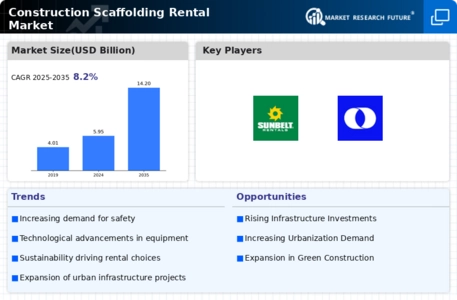Market Share
Construction Scaffolding Rental Market Share Analysis
In this dynamic environment of the construction scaffolding rental industry, different firms have resorted to various tactics of sharing markets with their rivals so as to remain competitive and also address needs emerging forth from changing customer preferences. One common approach is differentiation, where companies strive to make their products stand out from those offered by competitors through unique features or specialized services. This may involve innovative scaffold designs, incorporation of advanced safety measures, or customization for customers who need certain specifications for projects. Another important strategy in the building scaffold leasing industry is cost leadership. There are low-cost providers in this market which give customers lower prices than competitors do without compromising quality. This allows them to capture a greater market share amongst price-sensitive consumers seeking affordability instead. Profitability can be achieved when companies cut costs through efficient operational processes and economies of scale and form strategic partnerships with suppliers, thereby reducing expenses passed on to clients. Besides, market segmentation is an important plan used by companies that are involved in the construction scaffolding rental industry as a way of finding their target customers. For instance, they can focus on residential constructions, commercial developments, or large industrial projects. Understanding different segments' unique needs can help corporations have tailored solutions for each segment and thus be seen as experts in particular building sectors. On the other hand, within the scaffold renting sector for the construction industry, positioning refers to how a company seeks growth opportunities through innovation. On the other hand, collaboration and strategic partnerships have become part of market positioning in the construction scaffolding rental business. This implies that entering into contracts with either developers or some well-established firms in this specific line can lead to symbiotic relationships that will benefit all partners involved. These types of arrangements allow firms to combine competencies, share assets, and go to new markets. In general, this kind of approach helps increase overall market share by enabling tapping into varied client bases and thereby accessing many more diverse types of projects.






Leave a Comment